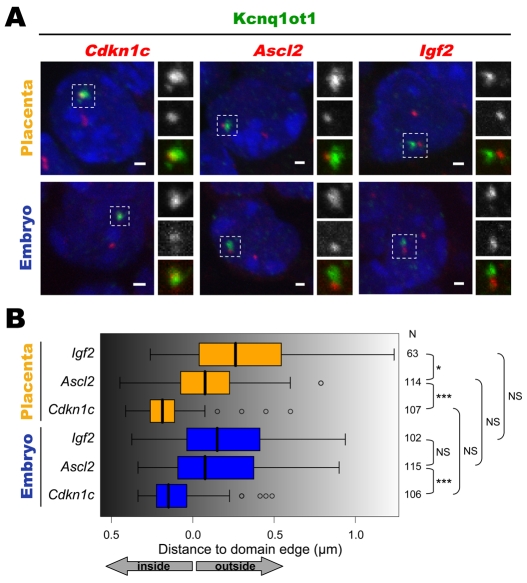Fig. 4.
Association of genes with the Kcnq1ot1 nuclear domain creates potential for silencing. (A) After labelling of the Kcnq1ot1 nuclear domain by RNA-FISH (green) on E12.5 embryo and placental sections, DNA-FISH (red) was performed to detect an ubiquitously imprinted gene (Cdkn1c), a gene specifically imprinted in the placenta (Ascl2) and a gene not regulated by Kcnq1ot1 located ∼300 kb away from the gene cluster (Igf2). Nuclei were counterstained with DAPI (blue) and imaged by confocal microscopy. Panels to the right of each image are a magnification of the indicated areas, showing the RNA-FISH signal (top), DNA-FISH signal (middle) and the corresponding merged image (bottom). Scale bars: 1 μm. (B) For each DNA signal found close to the Kcnq1ot1 domain, 3D distances between the centre of the DNA signal and the edge of the domain were measured. Cdkn1c is found mainly inside and Igf2 mainly outside the RNA domain in both tissues, with Ascl2 positioned near the edge. But whereas in the placenta Ascl2 is closer to the domain than the Kcnq1ot1-unrelated Igf2 gene, their relative positions are not significantly different in the embryo. *P<0.05, ***P<0.001; NS, not significant; Kruskall-Wallis test with Dunn's post-hoc test. Bars on the boxplots represent data points within 1.5 times the interquartile range.

